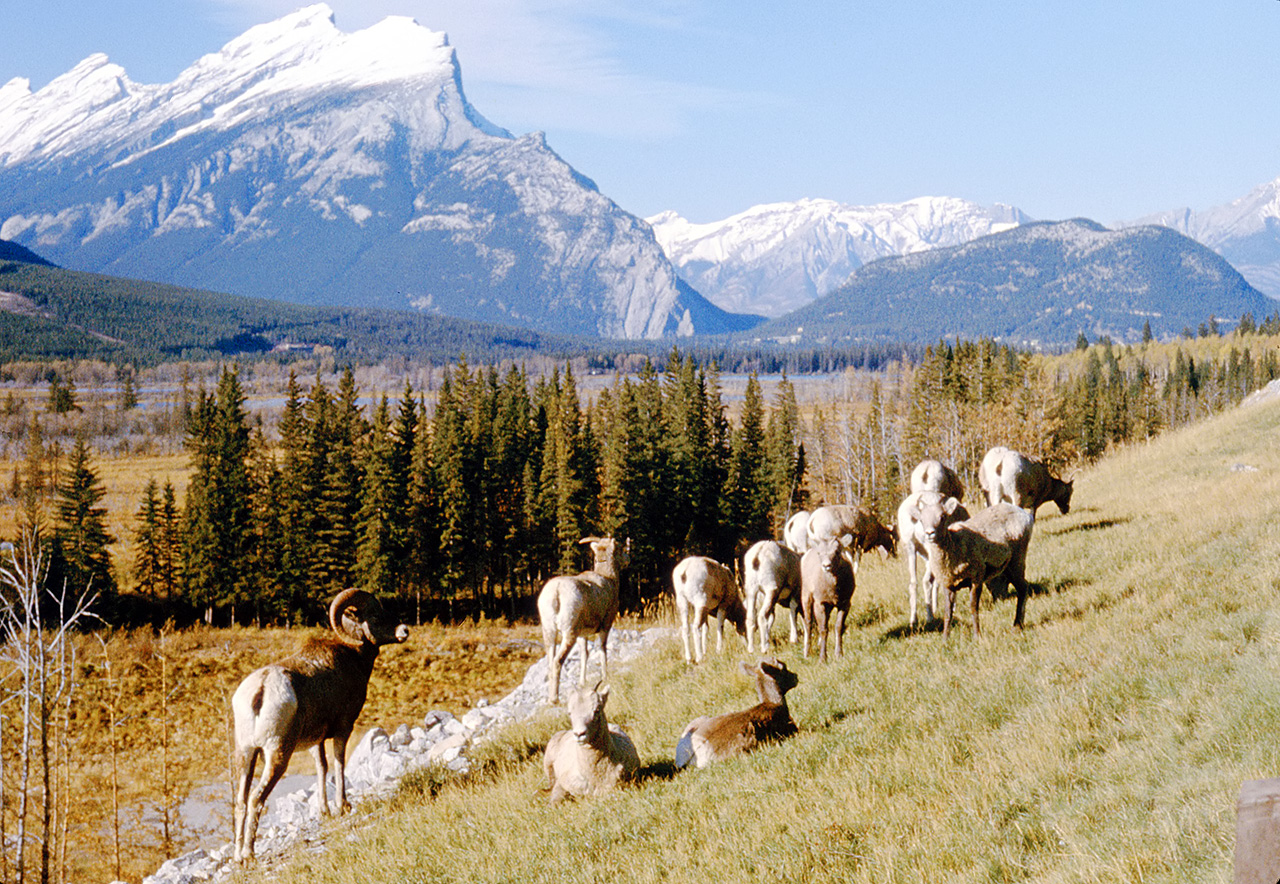Canada has multiple ecosystems, ranging from lush forests of British Columbia, the prairies of Western Canada, to the tundra of the Northern Canada. With a large land mass, and small population density, the wildlands of Canada provide important habitat for many animals, both endangered and not. Canada is home to approximately 70.000 known species of plants and animals – and perhaps many more that have yet to be discovered.
More than 400 species are listed as being at risk of extinction in Canada. The regions with the most endangered or threatened species are those in which humans have had the greatest impact on the environment.
The brown bear (Ursus arctos) is a large bear distributed across much of northern Eurasia and North America. Adult bears generally weigh between 100 and 635 kg and its largest subspecies, the Kodiak bear, rivals the polar bear as the largest member of the bear family and as the largest land-based predator.
The brown bear’s principal range includes parts of Russia, the United States (mostly Alaska), Canada, the Carpathian region (especially Romania), but also Ukraine, Slovakia, Poland and so on, the Balkans, Sweden and Finland, where it is the national animal.
The bighorn sheep (Ovis canadensis) is a species of sheep in North America named for its large horns. These horns can weigh up to 30 lb (14 kg), while the sheep themselves weigh up to 300 lb (140 kg). Sheep originally crossed to North America over the Bering land bridge from Siberia: the population in North America peaked in the millions, and the bighorn sheep entered into the mythology of Native Americans.
By 1900, the population had crashed to several thousand. Bighorns from the Rocky Mountains are relatively large, with males that occasionally exceed 500 lb (230 kg) and females that exceed 200 lb (90 kg). Bighorn sheep generally inhabit alpine meadows, grassy mountain slopes, and foothill country near rugged, rocky cliffs and bluffs.
The American bison, also commonly known as the American buffalo, is a North American species of bison that once roamed the grasslands of North America in massive herds, became nearly extinct by a combination of commercial hunting and slaughter in the 19th century and introduction of bovine diseases from domestic cattle, and has made a recent resurgence largely restricted to a few national parks and reserves.
The wood bison is one of the largest wild species of bovid in the world, surpassed by only the Asian gaur and wild Asian water buffalo. It is the largest extant land animal in North America.
The moose (North America) or Eurasian elk (Europe) (Alces alces) is the largest extant species in the deer family. Moose are distinguished by the palmate antlers of the males; other members of the family have antlers with a dendritic (“twig-like”) configuration. Moose typically inhabit boreal and mixed deciduous forests of the Northern Hemisphere in temperate to subarctic climates. Moose used to have a much wider range but hunting and other human activities greatly reduced it over the years.
Canada Jay is a member of the crow and jay family (Corvidae) found in the boreal forests across North America north to the tree-line and in subalpine forests of the Rocky Mountains south to New Mexico and Arizona. The vast majority of Gray Jays live where there is a strong presence of one or more of black spruce, white spruce, Englemann spruce, jack pine, or lodgepole pine. Gray Jays do not inhabit the snowy, coniferous, and therefore seemingly appropriate Sierra Nevada of California where no spruce and neither of the two named pines occur.
